Hunt for Nematocysts
The Theory
One of the defining characteristics for the group Nudibranchiais the secondary loss of the calcified shell present in other gastropod orders. Without this protective covering members have been forced over time to evolve alternate defensive strategies. These strategies range from irritating chitinous spicules embedded in the epidermis to large epidermal vacuoles filled with corrosive acid, capable of being expelled on contact (Martin et al, 2007). The defenses of nudibranchs are varied, creative, and in most cases are evolved multiple times by separate genera. Possibly the most interesting of these defenses belongs to the suborder Aeolididea. Members of this group incorporate the nematocysts of the hydroids they ingest into their own bodies, this is akin to swallowing a hand grenade so you can use it later.
Scientists are still unsure exactly how these animals safely ingest, transport and store these weapons but theories have been put forward based on morphological traits and observed behavior. When an aeoild attacks a hydroid not all of the defensive nematocysts fire, those that fail to discharge are consumed along with the hydroid. Thompson (1960) and Edmunds (1966) suggested that mucus secretions by the nudibranch aid this process by inhibiting the nematocysts from firing, providing additional protection from their stinging prey (Todd, 1981). These unfired nematocysts are moved from the stomach of the nudibranch to the cerata tips, still encased in mucus by way of special digestive extension called diverticula (Greenwood & Mariscal, 1984). These pathways extend up each individual cerata to deliver the nematocysts to the cnidosacs where they can be used for the animals defense (Greenwood & Garrity, 1991). Not all aeolids utilize nematocysts for defense, preferring to use one of the many other defensive strategies employed by nudibranchs. A short study was conducted to determine if this species of Godiva employ this strategy.
The Investigation
Several members of genus Godiva were identified in the tropical aquarium of University of Queensland located in the Goddard building. Over the course of several weeks, these individuals were observed in a lab setting as well as their home aquariums. Analysis of the defensive strategy of this Godiva species was achieved by observing behavioral, external and internal morphological traits of Godiva specimens and comparing them to Spurilla neapolitana, a species know to utilize nematocysts in it’s defense (Greenwood & Mariscal, 1984).
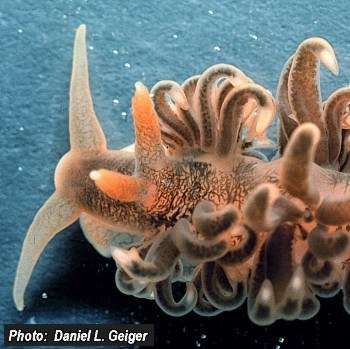
|
Figure 1. Spurilla neapolitans (photo from http://www.seaslugforum.net)
|
The Evidence
In the process of these observations the animal was observed feeding on a tiny species of hydroid without any apparent regard for the stenotele nematocysts used by the hydroid for defense. Resistance to nematocysts is a characteristic of aeolids utilizing these weapons in their own defense. This same behavior has been observed in Spurilla neapolitana individuals. (Behrens,2005; Greenwood & Mariscal, 1984).
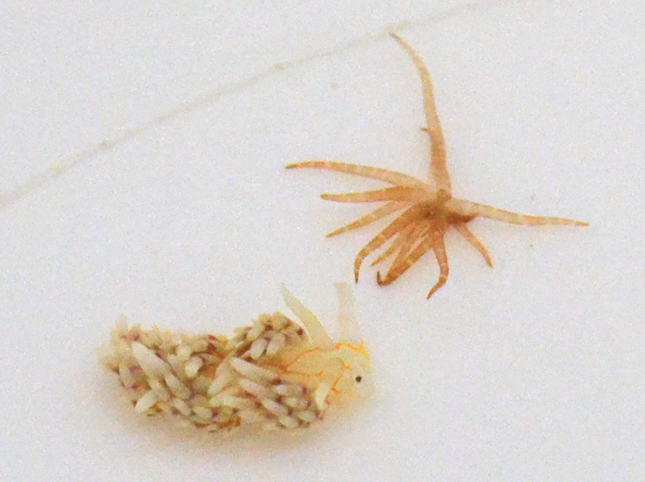
|
Figure 2. Godiva specimen preying on minute hydroid species
|
Members of the observed Godiva species displayed a defensive behavior characteristic of “armed” aeolids, extending their ceratal tufts when provoked. In “armed” species, like Spurilla neapolitana, this behavior is designed to bring thenematocysts into proximity of the threat, creating a bristling wall of stinging cells (Todd, 1981).
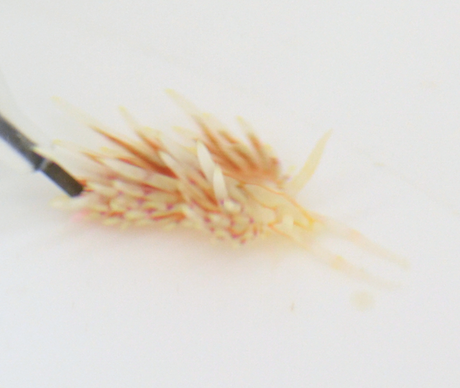 |
| Figure 3. Godiva specimen exhibiting defensive behavior. |
The darker core seen in each of the cerata in Spurilla neapolitana is the diverticulum that delivers the nematocytes from the digestive track to the white cnidosacs at the distal end (Figure 4.). A close inspection of the Godiva’s cerata with backlight reveals that they all end in translucent tips as well as containing darker central axis (Figure 4.). The similarities in these traits point toward the presence of nematocysts.
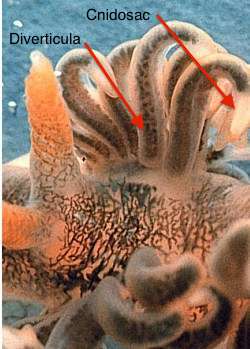 |
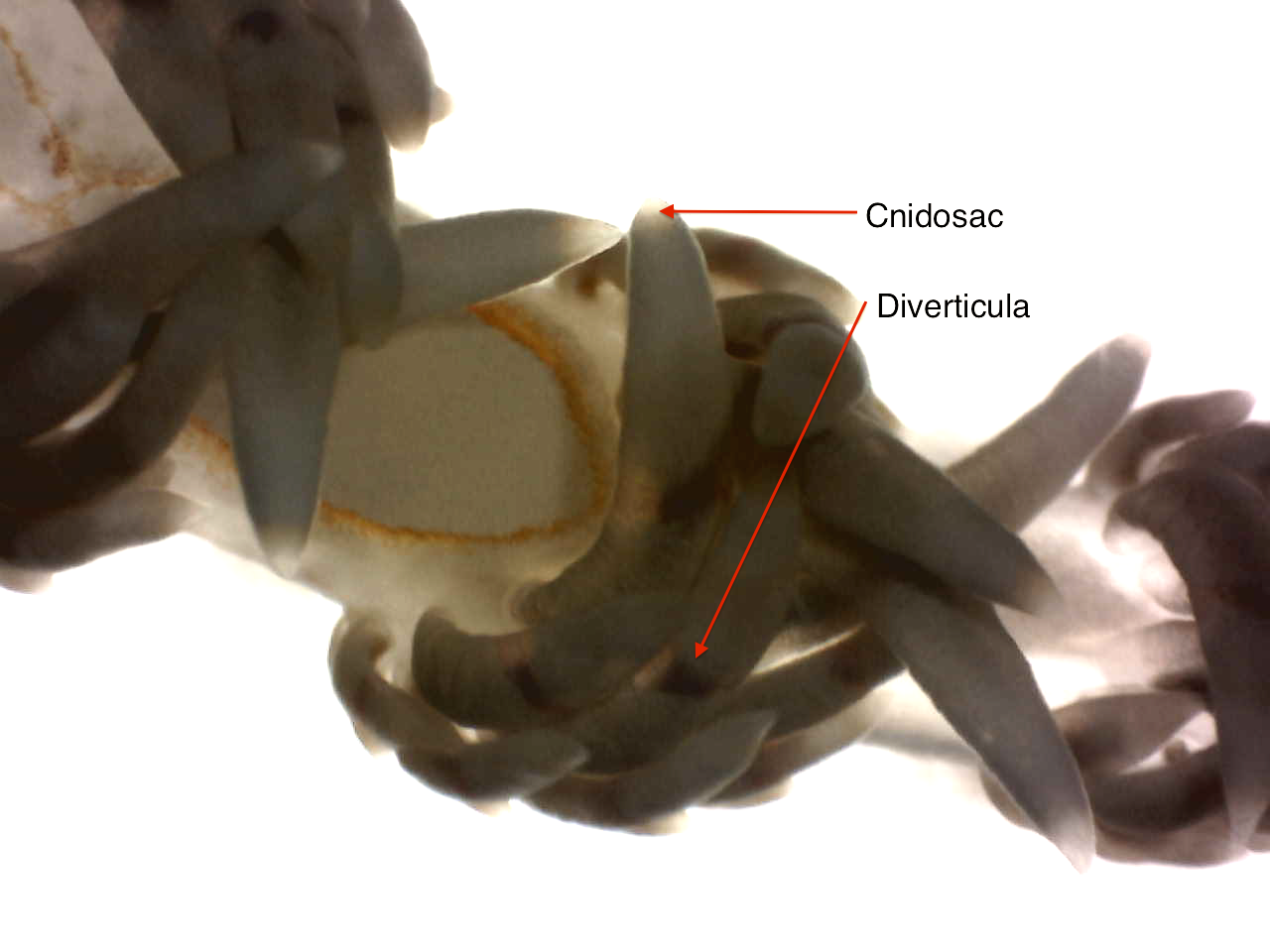
|
Figure 4. Comparison of Godiva (bottom) and Spurilla neapolitans (top) cerata and related structures
|
The evidence showed that this Godiva species consumes hydroids containing nematocysts, displays defensive behavior similar to that of an "armed" aeolid, and has ceratal structures morphologically similar to the cnidosacs and diverticulum of an "armed" aeolid. All of this points to the presence of nematocysts defense in Godiva. One last diagnostic test was conducted to determine once and for all what defensive strategy this Godiva species uses.
The Proof
The final test required the removal of cerata from the specimen for a smear test to view the internal structure of the cerata under a microscope.
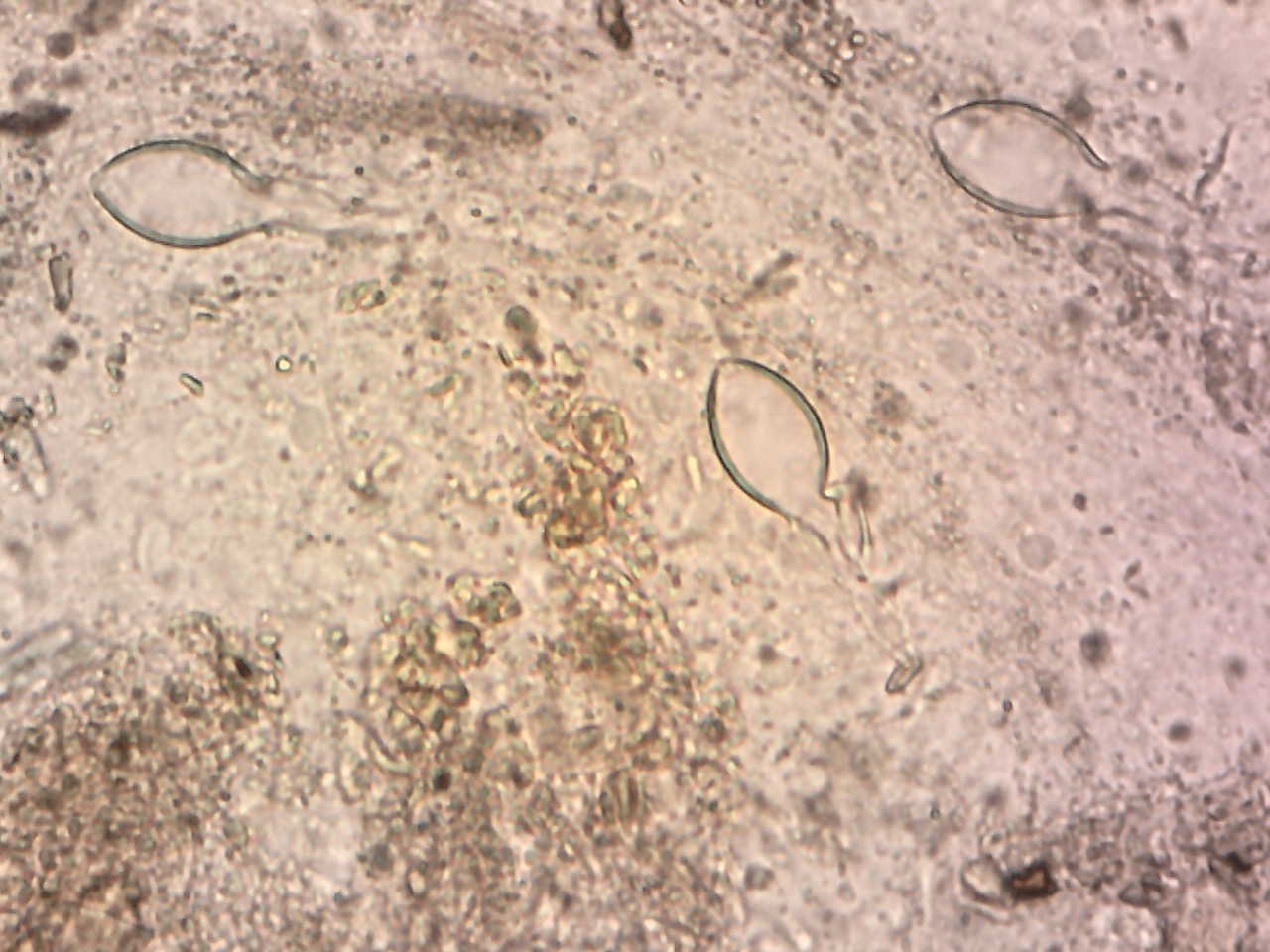
|
| Figure 5. Godiva cerata tip at 40x magnification |
This is a 40x magnification of the ceratal tip. The structure was crushed in the process of the smear but the structures present appear to be fired nematocysts.
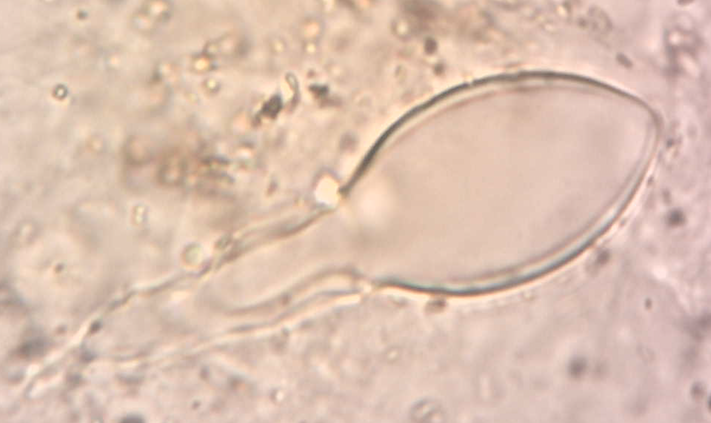 |
| Figure 6. Nematocyst in cerata tip at 100x magnification |
Confirmed: these are fired nematocytes!
The presence of these nematocysts along with the evidence provided by observations lead to a strong conclusion that this particular species of Godiva incorporate the defensive structures of their prey items, hydroids, into their own defensive processes.
|